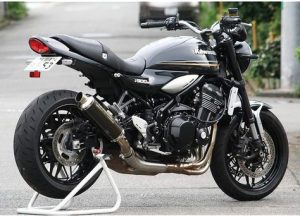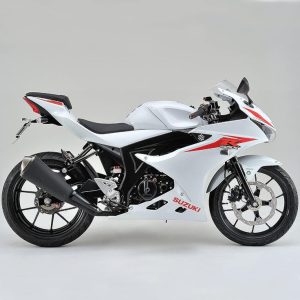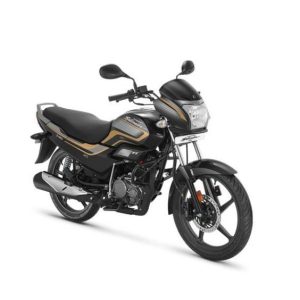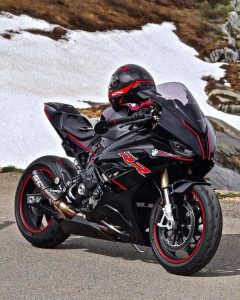May 29, 2024
Motorcycle Inspection: Ensure a Safe Ride
Motorcycles are thrilling vehicles that offer a unique riding experience. But before hitting the open road, safety should be your top priority. A motorcycle inspection is a crucial step to ensure your bike is in top condition.
This article will guide you through the motorcycle inspection process, highlighting key components to check and explaining why each check is important.
Benefits of a Regular Motorcycle Inspection
Regular motorcycle inspections offer several advantages:
Early detection of problems:
Inspections can identify minor issues before they become major problems that could strand you on the road or lead to an accident.
Improved safety:
A well-maintained motorcycle is less likely to experience malfunctions that could compromise your safety while riding.
Reduced repair costs:
Catching problems early can prevent them from worsening and requiring expensive repairs later.
Peace of mind:
Knowing your motorcycle is in good condition allows you to focus on enjoying the ride without worry.
What to Inspect on Your Motorcycle
A motorcycle inspection involves checking various components. Here’s a breakdown:
-
Tires: Proper tire condition is essential for safe riding. Check for wear and tear, look for any cuts or embedded objects in the tread, and ensure tire pressure is correct.
-
Brakes: Brakes are critical for stopping safely. Inspect brake pads for wear and tear, check brake fluid levels, and ensure the brakes function properly.
-
Lights: All lights, including headlights, taillights, turn signals, and brake lights, must be in working order to ensure visibility for you and other drivers.
-
Fluids: Check engine oil, coolant, and brake fluid levels. Look for any leaks or discoloration of fluids.
-
Controls: Make sure handlebars, levers, throttle, and clutch operate smoothly and without any binding.
-
Chain (if applicable): For motorcycles with chain drive, check chain tension, lubrication, and for any signs of damage.
-
Frame and Chassis: Inspect the frame and chassis for any cracks, bends, or rust that could compromise the motorcycle’s structural integrity.
Tools You Might Need for a Motorcycle Inspection
While some inspections are visual, having a few tools on hand can be helpful:
- Tire pressure gauge: To accurately measure tire pressure.
- Flashlight: For inspecting dark areas like under the motorcycle or inside compartments.
- Rags: For wiping away dirt or grime during inspection.
How Often Should You Inspect Your Motorcycle?
The frequency of motorcycle inspections depends on several factors, such as:
- How often you ride: If you ride frequently, more frequent inspections are recommended.
- Riding conditions: Riding on rough terrain or in extreme weather conditions can put more stress on your motorcycle, necessitating more frequent checks.
- Manufacturer recommendations: Consult your motorcycle‘s owner’s manual for specific inspection intervals.
A good rule of thumb is to perform a basic inspection before each ride. More comprehensive inspections can be done monthly or seasonally.
Professional Motorcycle Inspections
While you can perform many inspections yourself, some tasks may be best left to a qualified mechanic. This includes:
- Brake system inspection and adjustments: A mechanic can ensure your brakes meet safety specifications.
- Suspension inspection: A professional can assess your motorcycle’s suspension for proper function and wear.
- Complex repairs: If you identify any problems beyond your expertise, a mechanic can diagnose and fix the issue.
Choosing a Motorcycle Mechanic
When selecting a motorcycle mechanic, consider these factors:
- Experience: Look for a mechanic with experience working on your specific motorcycle make and model.
- Qualifications: Ensure the mechanic has the necessary certifications and training.
- Reputation: Read online reviews or ask fellow riders for recommendations.
Regular motorcycle inspections are an essential part of responsible motorcycle ownership. By taking the time to inspect your motorcycle regularly, you can ensure a safe and enjoyable riding experience. Remember, if you’re unsure about any aspect of motorcycle inspection or maintenance, consult a qualified mechanic.
Performing a Basic Motorcycle Inspection
A pre-ride inspection is a great way to ensure your motorcycle is in good condition before hitting the road. Here’s a breakdown of some key checks you can perform yourself:
-
Tires: Visually inspect your tires for any cuts, embedded objects, or signs of uneven wear. Use a tire pressure gauge to ensure they are inflated to the manufacturer’s recommended pressure.
-
Brakes: Squeeze the brake levers and check for firmness. They should not go all the way to the handlebars. Visually inspect the brake pads for thickness and wear.
-
Lights: Turn on all your lights, including headlights, taillights, turn signals, and brake lights. Walk around the motorcycle to confirm all lights are functioning properly.
-
Fluids: Check the engine oil level using the dipstick and consult your owner’s manual for proper oil type and level. Look for any leaks around the engine or forks. Check the coolant level in the overflow reservoir.
-
Controls: Make sure the handlebars, clutch lever, throttle, and brake levers move freely and without any binding. Ensure your mirrors are adjusted for a clear view behind you.
Additional Tips for a Safe Ride
-
Gear Up: Before riding, wear a properly fitted helmet, eye protection, long sleeves, long pants, and sturdy footwear.
-
Be Weather Aware: Check the weather forecast before you ride and dress accordingly. Avoid riding in extreme weather conditions.
-
Ride Within Your Limits: Don’t push yourself beyond your skill level or the motorcycle’s capabilities. Take your time and ride defensively.
-
Let Someone Know: Tell a friend or family member where you’re going and when you expect to be back.
By following these tips and performing regular motorcycle inspections, you can contribute to a safe and enjoyable riding experience. Remember, if you are ever unsure about the condition of your motorcycle, consult a qualified mechanic.
Keeping Your Motorcycle in Top Shape: A Rider’s Responsibility
Motorcycles are precision machines that require regular maintenance to ensure optimal performance and safety. In addition to regular inspections, there are other steps you can take to keep your motorcycle in top condition:
-
Follow the Manufacturer’s Maintenance Schedule: Your motorcycle’s owner’s manual outlines recommended maintenance intervals for various components. This schedule typically includes tasks like oil changes, chain lubrication (if applicable), and air filter cleaning.
-
Keep it Clean: Regularly washing your motorcycle removes dirt, grime, and debris that can contribute to corrosion or hide potential problems.
-
Park Smart: Park your motorcycle in a cool, dry place whenever possible. Avoid exposing it to extreme temperatures or direct sunlight for extended periods.
-
Winterize (if applicable): If you live in an area with harsh winters, take steps to winterize your motorcycle properly. This may involve draining fluids, adding a battery tender, and storing the motorcycle in a climate-controlled space.




